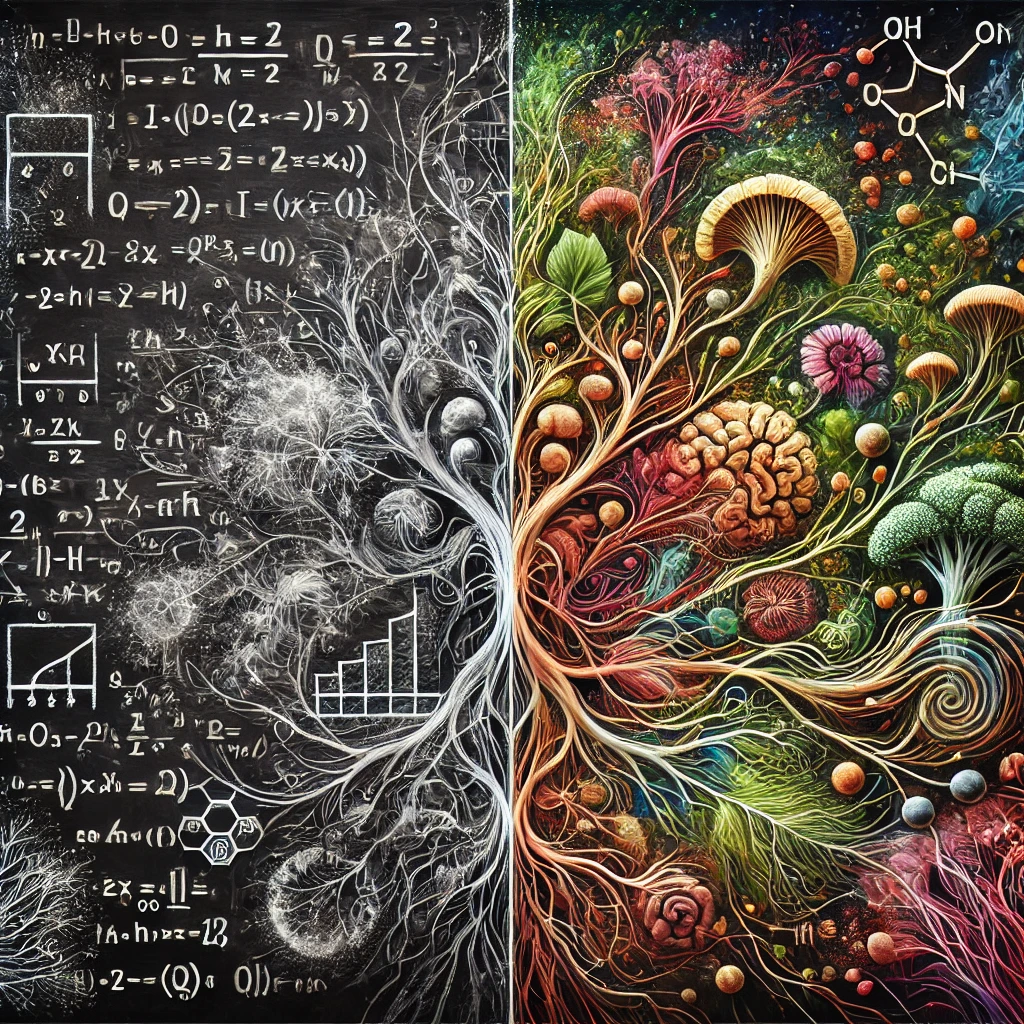Math is often treated like a sacred text in science—revered, unquestioned, and sometimes downright worshipped. Equations are held aloft as universal truths, seemingly immune to the messiness of reality. But maybe it’s time we peel back this gilded veneer and ask: is math really the ultimate arbiter of scientific truth? Spoiler alert: it’s not.
I recently found myself in a spirited debate with a colleague—let’s call him Dr. X. He’s a professor of evolutionary genetics at a world-renowned university, and let’s just say he’s the type who’d trade his left arm for a pristine data set. We were discussing natural selection, the bread and butter of evolutionary biology, when we hit an impasse. He argued that mathematical models are indispensable for understanding evolution, while I countered that these models often miss the forest for the trees. “How can you be so cavalier about the math?” he asked. I shot back: “How can you be so cavalier about reality?”
This isn’t just academic bickering. Our disagreement reflects a deeper issue: math, for all its beauty and utility, struggles to capture the intricacies of biological systems. Life is not a neat equation. It’s a cacophony of interactions, feedback loops, and unexpected twists. And as much as we’d like to think otherwise, some of it simply cannot be distilled into a mathematical formula without losing something vital.
Take ecosystems, for example. They’re not just collections of species living in proximity; they’re profoundly interconnected networks where the survival of one organism often hinges on the presence of another. Predator-prey dynamics, mutualistic relationships, nutrient cycles—these are not static or linear phenomena. They’re dynamic, messy, and often unpredictable. Attempting to model such systems mathematically can feel like trying to capture the essence of a symphony by writing down the notes of just one instrument.
And it’s not just ecosystems. Evolution itself defies easy quantification. While natural selection can be represented mathematically, these equations often rest on assumptions that oversimplify reality—like imagining that all individuals in a population are identical, except for the trait being studied. But real populations are rife with variation. They’re influenced by history, geography, behavior, and chance. Math might tell us what could happen under idealized conditions, but biology happens in the chaos of the real world.
One of the main reasons math falters in biology is that living systems are simply too complex to model fully. Biological and ecological causation operate on a scale and complexity that’s mind-boggling. Imagine trying to account for every variable in a rainforest: the soil microbes, the fungi, the plants, the animals, the climate, the human activity on its periphery. Each of these factors influences the others, often in ways we don’t yet understand. Simplifying this complexity into a mathematical model is like trying to stuff a hurricane into a Mason jar. It’s just not going to fit.
The problem isn’t that math is useless. Far from it. Math is a powerful tool, but it’s just that: a tool. And like any tool, it has its limits. The hammer is great for nails, but it’s a poor choice for stitching fabric. Similarly, math excels at describing physical systems where variables can be isolated and controlled, but it struggles with the interconnectedness and unpredictability of living systems.
This overreliance on math has consequences beyond academia. When we frame biological processes in purely mathematical terms, we risk distorting them. We’re drawn to the simplicity and clarity of numbers, but in doing so, we may ignore the nuances that are essential to understanding life. Worse, we risk misleading the public. If students and laypeople are taught that evolution is reducible to equations, they may come to see it as deterministic or mechanistic, rather than the vibrant, adaptive process it is.
Perhaps the most damning critique of math’s epistemic dominance in science is that it segments and isolates phenomena that are fundamentally interconnected. Life doesn’t operate in silos; it’s a web. By focusing on discrete variables and isolated interactions, math often neglects the relationships that are the very essence of living systems. It’s like trying to understand a dance by studying a single dancer in a spotlight while ignoring the music, the stage, and the rest of the troupe.
This isn’t to say we should toss out the equations. Math has given us incredible insights, from decoding the structure of DNA to understanding the spread of diseases. But we need to approach it with humility. We need to recognize that it’s one lens among many, not the ultimate arbiter of truth. And we need to embrace other ways of knowing—observation, intuition, narrative—that are better suited to capturing the richness and complexity of life.
So the next time someone tells you that math is the language of the universe, remember: it’s a language, not the language. And like any language, it’s shaped by its strengths and limitations. Life is bigger, messier, and more beautiful than any equation can capture. And that’s not a failure of math. It’s a testament to the wonder of biology.

